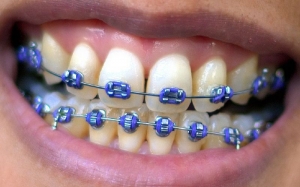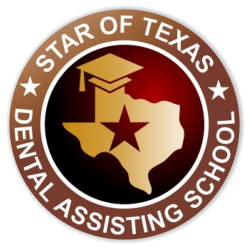If your teeth are in poor alignment, you could be facing a  functional or cosmetic problem. Orthodontics (braces) can eliminate that problem for you. One of the first things people notice about you is your smile and how your teeth look. You don’t have to be a dentist to notice poorly positioned, crooked teeth. In today’s culture, crooked teeth are not regarded as attractive or desirable. Most people, when asked, say that they would like to have straight teeth. Straight, white teeth are the cosmetic dental improvements patients most request.
functional or cosmetic problem. Orthodontics (braces) can eliminate that problem for you. One of the first things people notice about you is your smile and how your teeth look. You don’t have to be a dentist to notice poorly positioned, crooked teeth. In today’s culture, crooked teeth are not regarded as attractive or desirable. Most people, when asked, say that they would like to have straight teeth. Straight, white teeth are the cosmetic dental improvements patients most request.
The need for orthodontics is best discovered when you are young. A dentist will have a good indication of whether or not your teeth will be straight when he sees you as a child 6 to 8 years of age. Most treatment would not begin until a patient is 8 years old, although in some cases, orthodontics can be started earlier.
It is easier to direct the movement of teeth in a child. Early tooth guidance is a very important phase of orthodontic care, which can take place even though all of the permanent teeth are not yet in place. Certain problems are much easier to correct at this stage of a “mixed dentition” of baby and permanent teeth. When more treatment than simple early tooth guidance is required, an average case can last from 18 to 24 months.
While orthodontic therapy is admittedly easier in the child patient, you are never too old to begin orthodontics. The number of adults seeking orthodontic treatment has risen dramatically during the past decade. As long as you have healthy bone support for your teeth, you can have orthodontic therapy. Most adult cases take 18 to 24 months to complete.
Once the braces are removed, it is usually necessary to wear a retainer. This retainer will maintain the new tooth alignment until the teeth have had a chance to become firmly set in their new positions. This retainer may be either removable or fixed in place.
While the orthodontic treatment is in the active phase, that is, while the braces are on your teeth, you must be very diligent about keeping your teeth clean. This will be more difficult than and somewhat different from cleaning your teeth without braces. You will be instructed in the use of any cleaning aids needed. These may include dental floss threaders, an oral irrigator to flush out debris, proper brushing habits, fluoride mouthrinses, and periodontal aids. You must follow your proper oral self-care routine each night to prevent decay, decalcification of the teeth, and gum disease.
Braces may also be suggested to correct a specific dental problem that only affects one or several teeth. This is not a cosmetic tooth repositioning, but rather a functional tooth movement. Occasionally, in order to properly finish an orthodontic case, the orthodontist may ask the dentist to adjust the enamel of some teeth or bond a resin to some teeth to improve the occlusion (bite alignment) or to enhance cosmetics.
In summary, remember that you are never too old to begin orthodontic treatment.
- It may be easier and less expensive to be treated at a young age (about 8 years old).
- You must follow your proper oral self-care routine every night.
- Get your teeth cleaned professionally by a dental hygienist every three months to reduce the occurrence of decay and gum disease.
Orthodontics can make a dramatic improvement in your appearance, your life, and how you feel about yourself!
Star of Texas Dental Assisting School is a great first step if you are interested in Orthodontics! Our dental assisting program can open many doors for those interested in pursuing a career in the health field.

